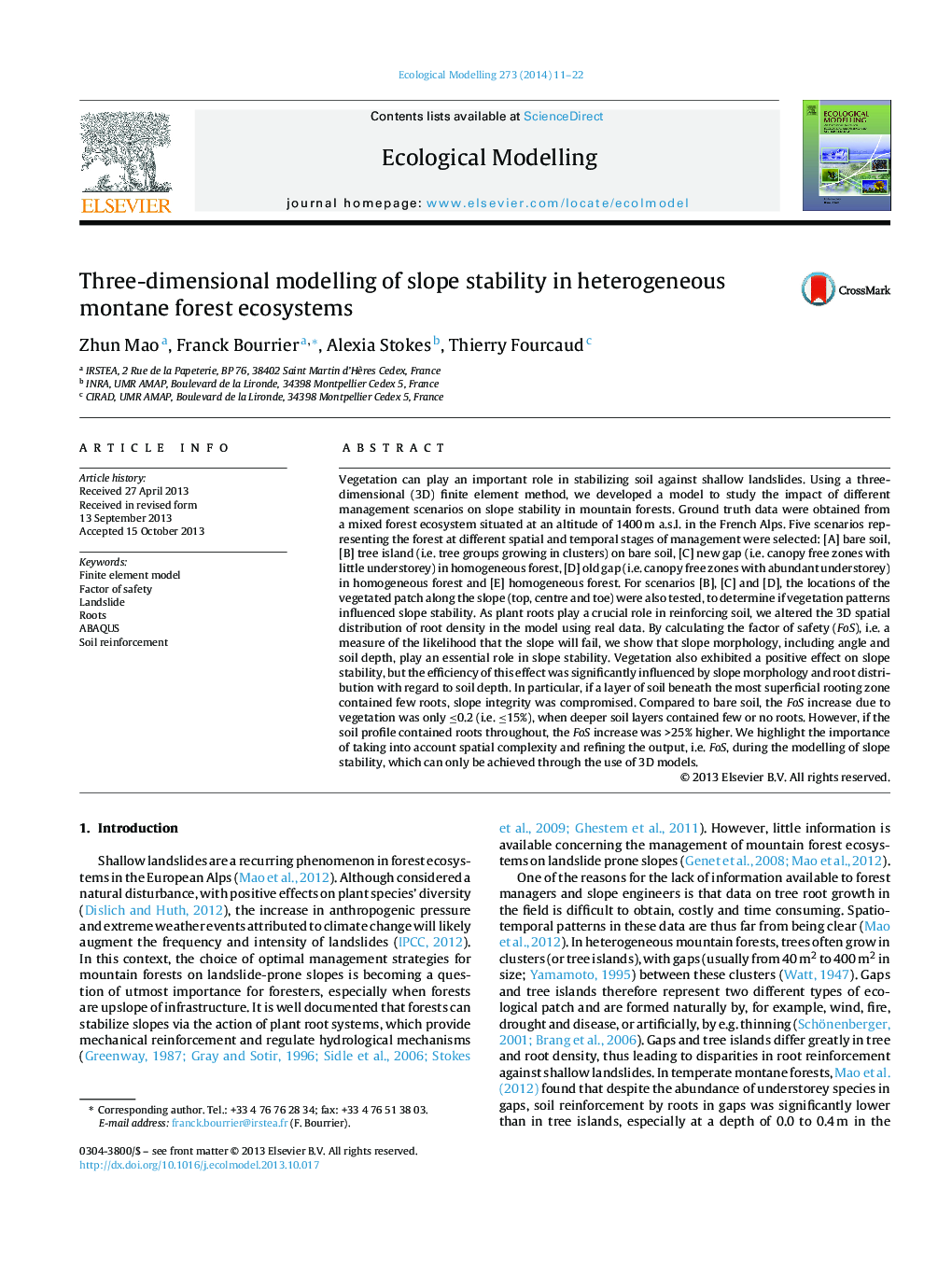| کد مقاله | کد نشریه | سال انتشار | مقاله انگلیسی | نسخه تمام متن |
|---|---|---|---|---|
| 6296901 | 1617473 | 2014 | 12 صفحه PDF | دانلود رایگان |
عنوان انگلیسی مقاله ISI
Three-dimensional modelling of slope stability in heterogeneous montane forest ecosystems
ترجمه فارسی عنوان
مدل سازی سه بعدی شیب در اکوسیستم های جنگلی مونتان ناهمگن
دانلود مقاله + سفارش ترجمه
دانلود مقاله ISI انگلیسی
رایگان برای ایرانیان
کلمات کلیدی
موضوعات مرتبط
علوم زیستی و بیوفناوری
علوم کشاورزی و بیولوژیک
بوم شناسی، تکامل، رفتار و سامانه شناسی
چکیده انگلیسی
Vegetation can play an important role in stabilizing soil against shallow landslides. Using a three-dimensional (3D) finite element method, we developed a model to study the impact of different management scenarios on slope stability in mountain forests. Ground truth data were obtained from a mixed forest ecosystem situated at an altitude of 1400 m a.s.l. in the French Alps. Five scenarios representing the forest at different spatial and temporal stages of management were selected: [A] bare soil, [B] tree island (i.e. tree groups growing in clusters) on bare soil, [C] new gap (i.e. canopy free zones with little understorey) in homogeneous forest, [D] old gap (i.e. canopy free zones with abundant understorey) in homogeneous forest and [E] homogeneous forest. For scenarios [B], [C] and [D], the locations of the vegetated patch along the slope (top, centre and toe) were also tested, to determine if vegetation patterns influenced slope stability. As plant roots play a crucial role in reinforcing soil, we altered the 3D spatial distribution of root density in the model using real data. By calculating the factor of safety (FoS), i.e. a measure of the likelihood that the slope will fail, we show that slope morphology, including angle and soil depth, play an essential role in slope stability. Vegetation also exhibited a positive effect on slope stability, but the efficiency of this effect was significantly influenced by slope morphology and root distribution with regard to soil depth. In particular, if a layer of soil beneath the most superficial rooting zone contained few roots, slope integrity was compromised. Compared to bare soil, the FoS increase due to vegetation was only â¤0.2 (i.e. â¤15%), when deeper soil layers contained few or no roots. However, if the soil profile contained roots throughout, the FoS increase was >25% higher. We highlight the importance of taking into account spatial complexity and refining the output, i.e. FoS, during the modelling of slope stability, which can only be achieved through the use of 3D models.
ناشر
Database: Elsevier - ScienceDirect (ساینس دایرکت)
Journal: Ecological Modelling - Volume 273, 10 February 2014, Pages 11-22
Journal: Ecological Modelling - Volume 273, 10 February 2014, Pages 11-22
نویسندگان
Zhun Mao, Franck Bourrier, Alexia Stokes, Thierry Fourcaud,
